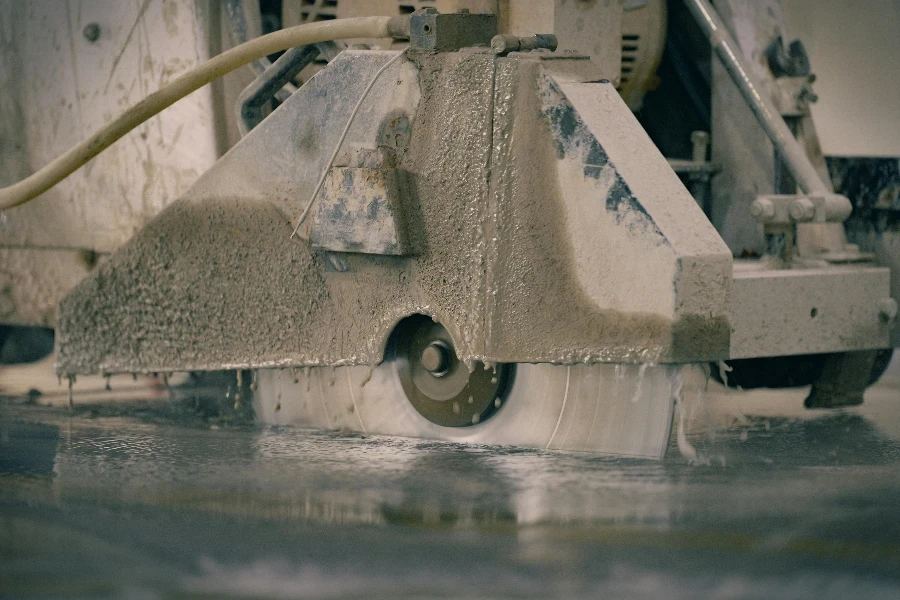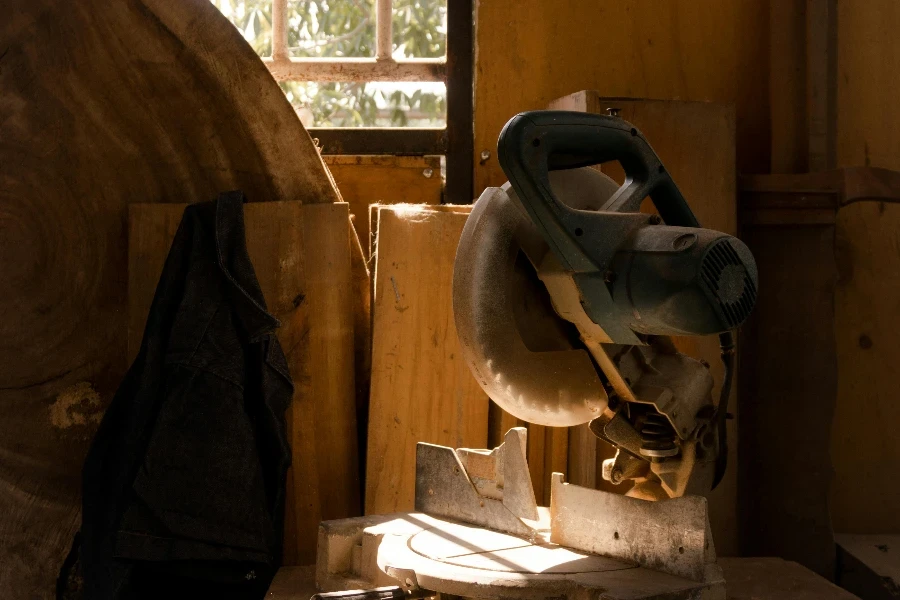Concrete saw cutters have long been a staple of the construction industry, their vibrating diamond-filled discs creating clean and accurate cuts through concrete. With their unmatched precision and ease of use, these machines revolutionised the way contractors work, enabling them to quickly and efficiently slice through concrete with minimal effort. Whether you’re working on a small residential renovation or a large-scale commercial project, mastering the use of concrete saw cutters can make or break your project.
Concrete saw cutters form an integral and indispensable part of most construction work, making them difficult to avoid through this extensive guide, we’ll explore different types of concrete saw cutters, their main features, key factors determining their applicability, as well as safety guidelines, maintenance tips and the latest technological advancements that are likely to reshape future use. By the end of this article, the reader would have a clear understanding of concrete saw cutters and their use.
Table of Contents:
1. Types of concrete saw cutters
2. Key features and components
3. Applications and use cases
4. Safety considerations and best practices
5. Maintenance and care
Types of concrete saw cutters

There are several types of concrete saw cutters that vary in their details. In this article,
Among the most common type of concrete saw cutters are walk-behind saws. They are used to make large, flat cuts in surfaces like floors, roads and bridges. The engine of this cutter, which moves on a wheeled frame, allows the user to push the saw along the line to be cut. Walk-behind saws are very stable and suitable for either shallow or deep cutting.
Handheld saws, meanwhile, allow for more maneuvrability and mobility, and are often better suited to smaller jobs, or limited access areas. Handheld saws that run off of electricity, gasoline or hydraulics allow for flexibility in different workspaces, and can be used for quicker, easier cuts, trimming work, or anything that can’t quite fit in the work area of a larger machine.
Wall saws form another niche category within the concrete saw cutter market that is tailored for cutting in walls and ceilings or other non-horizontal surfaces. The saws in this category are anchored to a track so that they move up and down a wall or other inclined surface for accurate vertical or angled cutting. They are commonly used for renovations of existing buildings in which apertures for windows and doors need to be taken out or modified from the existing structure.
Key features and components

First we need to look at the main features and components of concrete saw cutters and gain a deeper insight into the innovative technology that makes it so effective and efficient to use.
Of all the parts of a concrete saw cutter, the blade is the most important. The purpose of the blade is to slice through the concrete. The blade of a modern concrete saw has to be hard yet durable enough to withstand the stresses involved in cutting through hard concrete while also having to be replaceable. Therefore, modern blades consist of hard segments made out of diamonds, cemented onto a steel core, and shaped like a plate. The size and geometry of the blade vary greatly depending on the application. For instance, a handheld saw blade ranges from 4 inch in diameter, while the largest ones are 72 inch for walk-behind models.
The second feature is the power supply. Like our electric chainsaw, electric saws are quieter than hydraulic or petrol (gasoline) units. They are free from emissions and can be used indoors or in a location that’s environmentally sensitive. At the same time, a petrol (gasoline) powered saw is more convenient or portable when you need to do your work outside or in an area where electricity isn’t available. A hydraulic saw is often used on a larger machine and has more power and performance for tougher, heavier cutting jobs.
Another feature that make concrete saw cutters desirable is cutting depth adjustment. If you are taking on a project that requires you to cut to the specific depth, for example, to put expansion joints or to prepare for a repair, you will need a saw that lets you control this aspect with ease. Many saw cutters come with simple depth adjustment features to make it easy for you to switch between depths of your cuts.
Applications and use cases

Concrete saw cutters are used in every structure built in the world today when occaisionally changing, upgrading or demolishing any parts of them. These tools have to be precise, fast, economical, reliable and simple to use in almost every situation.
In road construction and maintenance, concrete saw cutters are used to form expansion joints. These joints are channel-like grooves cut into the lower edge of the road surface in order to enable it to expand and contract naturally with changes in temperature. The cuts are spaced at regular distances, and filled with soft pliable materials, such as polymeric rubber, to permit movement and prolong the life of roads and highways.
Renovation of buildings often includes cutting into existing concrete. Openings in concrete walls, floors or ceilings must be marked and cut for new windows, doors, or utility access. Getting a clean, accurate cut that does not damage existing concrete is crucial. Precise cutting tools like concrete saw cutters are sometimes essential to make historical restoration projects possible.
When it comes to demolition, concrete saw cutters provide a more controlled way of breaking up large concrete structures. Making strategic cuts weakens specific areas of a structure, allowing contractors to make more precise and safe demolitions, rather than blasting away entire areas. This technique reduces the amount of force that’s required and minimises the risk of collateral damage to nearby buildings, or any utility infrastructure.
Safety considerations and best practices

While a concrete saw cutter is an extremely useful piece of equipment, it is necessary to take the proper precautions because if not used properly, this tool can be detrimental to the safety of the operator and those around them. The following discussion outlines the measures that should be taken while utilizing concrete saw cutters to ensure a safe workplace environment.
In my opinion, concrete saw cutters are a vital piece of equipment in a work place setting. It is a highly effective tool that has the ability to accurately and quickly insert a straight line into concrete. However, it is essential to understand that without proper usage, it can end up damaging not just the concrete itself, but also posing a potential threat to the safety of the operator and the surrounding people.
In order to prevent any sort of accidents caused by concrete saw cutters, it is important to follow the guidelines and use the equipment under supervision of someone who is well-versed in handling it. When the saw is being used, it is essential to keep ear muffs on at all times and also wear the necessary safety gear such as boots and gloves. It is also recommended to utilize an eyewear cover as concrete particles have the potential to get into the eyes and cause irritation. The operator should refrain from wearing a head covering as it can restrict their vision.
On the whole, while concrete saw cutters can prove to be a powerful asset, it is imperative to abide by the safety guidelines and follow the best practices to avoid any incident.
Before tackling any concrete saw cutter job, it is imperative to put on your personal protective equipment (PPE). Your PPE should include safety glasses or a face shield to protect your eyes from flying pieces of debris, hearing protection such as ear muffs or ear plugs to protect your hearing from the very loud noise of the saw, and finally, a dust mask or respirator to protect your lungs from the dust created by the concrete as it is cut. You should also add steel-toed boots to your PPE ensemble to protect your feet in case a piece of concrete falls and hits your foot. Heavy-duty gloves are also recommended to protect your hands from cuts and the hot blade.
Anyone operating a concrete saw cutter needs to have the proper training and knowledge to do it well. Whether this is an operator’s first time using a concrete saw with a cutter or they have been working with one for years, they should be familiar with the exact model they’re using and how to use its controls, safety features and maintenance protocols. They should be trained in the proper cutting techniques, learn which blade to use for which application, how to handle common issues that may arise during operation, and receive regular refresher courses to make sure they are always up to speed on the latest in safety protocols and best practices.
Site preparation is another crucial step in safe concrete saw cutting. The work area must be clearly marked and cordoned off to prevent unauthorised entry, and the area should be well-lit, especially if cutting is going to take place early in the morning or late in the evening. Before cutting, the area should be checked to make sure there are no buried utilities or reinforcing steel that could be damaged by the blade or injure the operator. Good ventilation is also important, especially if cutting in an enclosed space, so that exhaust fumes or concrete dust do not accumulate.
Maintenance and care

Regualry checking and maintaining concrete saw cutters will be very help full in ensuring that works have a longer life. With a well-maintained saw, it will ensure safer working conditions to the operators too, as well as an efficient performance.
Daily checks are an important part of operating a concrete saw cutter. You should inspect the saw for loose or broken parts, make sure that all guards are properly attached and work correctly, and check the blade for wear and damage. Replace the air filter frequently to maintain engine performance, especially in a dusty environment, and lubricate all moving parts to make sure your tools operate smoothly and do not wear out prematurely.
Regular blade checks to look for loss of diamonds or excessive wobbling/shimmying in rotation, followed by blade replacement, are key to keeping cuts clean and efficient. Dull blades cut poorly and unduly strain the engine. Some operators take blades to a sharpening service, which recondition them for repeated use; others simply replace performance-compromised blades.
Storage and transportation of concrete saw cutters can be the least attention-grabbing aspect of your maintenance routine. As you might imagine, saws should be stored in a clean, dry area to avoid rust and corrosion between jobs. Transport is likewise a concern. You should secure your saw in a way that minimises the risk of damage from jostling or vibration, and when possible, your saw will come with dedicated transport wheels or a cart. When moving a saw between jobs, take care not to risk an injury as you wheel it around.
Conclusion
Though heavy, cumbersome and dangerous, concrete saw cutters are a must-have tool in the modern world of construction. They feature several types, that can be employed for pretty much every conceivable construction task, from concrete demolition to landscaping. To maximise project results, contractors need to know the types of concrete saw cutters and their key components, features, and operating guidelines. They also need to be aware of cutting techniques, the personal protective equipment required for safe and efficient operation, and the regular maintenance that helps these powerful tools serve for decades. The world of concrete saw cutting has undergone incredible changes during the past few decades since the advent of innovative technologies. We can only expect these technologies to evolve even more, as the construction industry becomes more advanced in the future.



